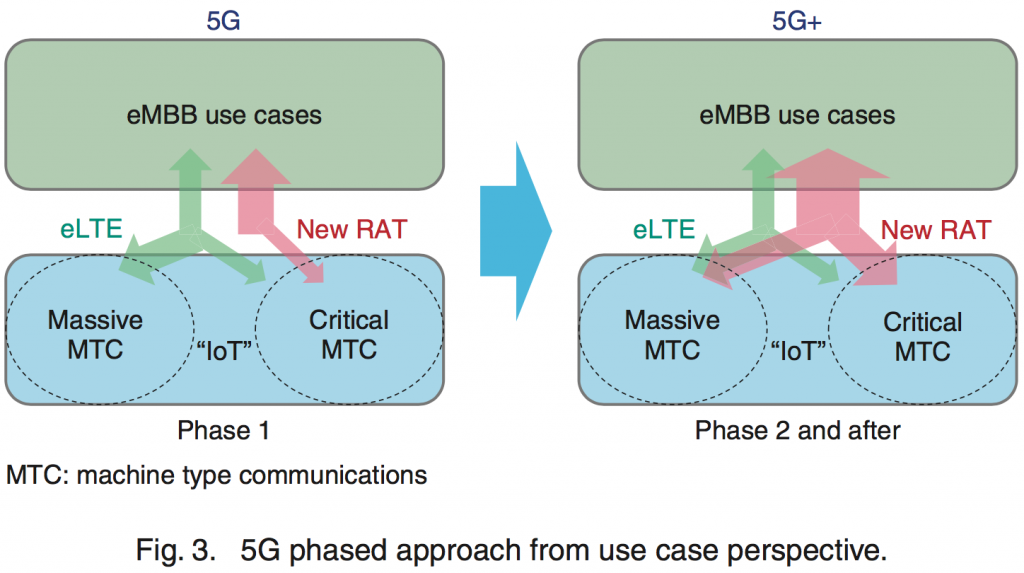NTT DOCOMO researchers discuss 3GPP’s 5G radio standardization process in the March 2017 issue of NTT Technical Review.
It explains the phasing of 5G radio development. Phase 2 is the end of the current concentration of activity due for completion in late 2019. That specification is intended to meet ITU’s IMT-2020 performance requirements. Phase 1 is for early commercial deployment. Before Phase 1 is done a third mode (called non-standalone, which is explained) will be culled for even earlier commercial deployment. (They also refer to Phase 1 and Phase 2 as 5G and 5G+, respectively.)
While eMBB gets most of the attention, the massive communications (high device density) and critical communications (ultra-reliable and low latency) aspects of 5G don’t get supported fully in the specifications at an ITU-requirements level until the end of Phase 2.
The authors refer to decisions made in a September 2015 3GPP 5G workshop. Those decisions were essentially confirmed at last week’s 3GPP meetings. The most current status of 3GPP specifications development is found by reviewing meeting documents on the 3GPP website.
The article focuses on radio aspects. The evolution of the core network is another important part of 5G.
